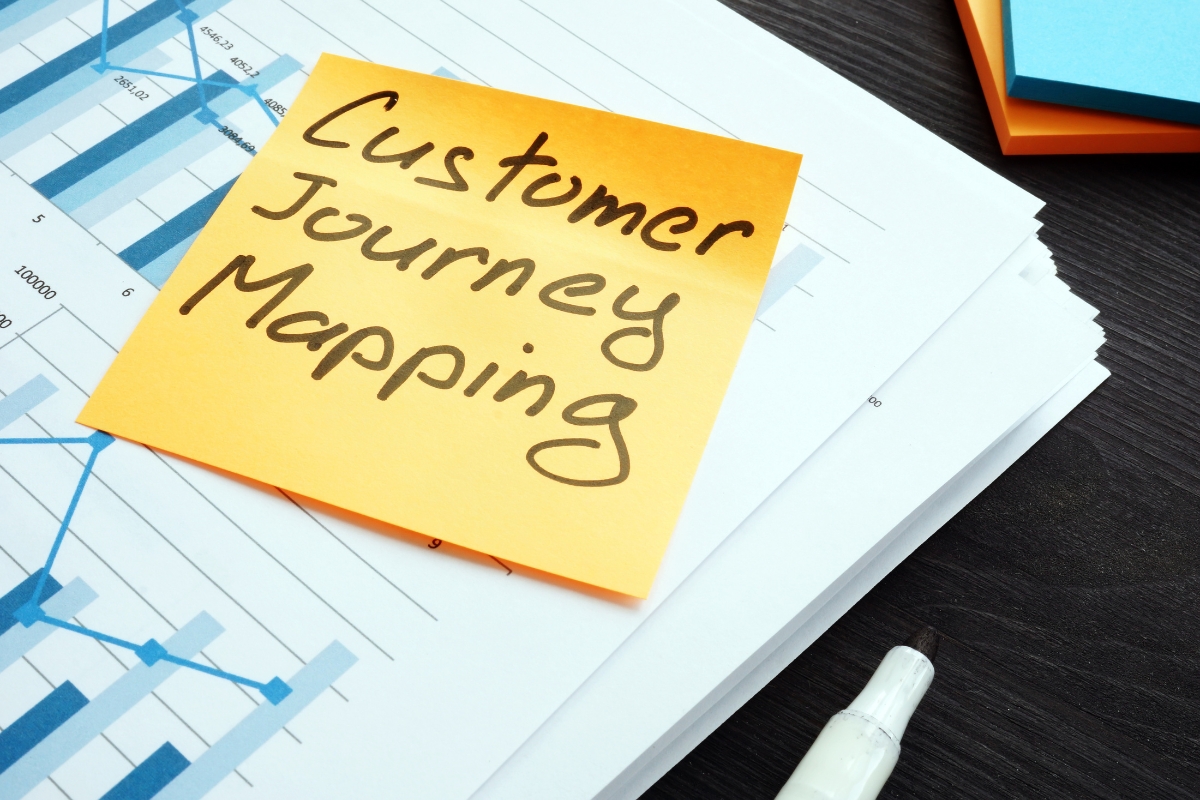In today’s competitive market, understanding and optimizing the customer journey is crucial for driving sales and building lasting relationships. Customer journey mapping allows businesses to visualize and enhance every touchpoint a customer experiences, from initial contact to post-purchase follow-up.
However, manually mapping and managing these journeys can be complex and time-consuming. That’s where automation comes in. By integrating automation into your customer journey management, you can streamline processes, personalize interactions, and ensure that your customers receive the right message at the right time.
In this guide, we’ll explore how automation can simplify customer journey mapping, helping you boost efficiency, improve customer satisfaction, and ultimately drive more sales.
Unleashing Customer Data: The Impact of Customer Journey Mapping
Harnessing the Power of Automation in Customer Journey Mapping

Customer journey mapping is essential for any business aiming to enhance its sales process. By mapping the consumer journey, businesses gain valuable insights into their customers’ needs, preferences, and pain points at each stage of their buying journey.
Traditionally, creating these maps required extensive manual effort, involving the collection and analysis of customer data, segmenting customer personas, and tracking interactions across various touchpoints. This process could be time-consuming and prone to human error.
With the advent of automation technology, however, the process of how to create a customer journey mapping has been revolutionized. Small business automation tools allow businesses to track and analyze customer interactions in real-time, providing a more accurate and dynamic view of the customer journey.
These tools can aggregate data from multiple sources—such as websites, social media, email, and CRM systems—into a centralized platform, offering a holistic view of customer behavior.
Understanding the Role of Data in Streamlining Sales Processes

Customer data management is central to the efficiency and success of modern sales processes, particularly when integrated with automation. By collecting and analyzing customer data at every customer interaction, businesses can gain deep insights into customer behavior, preferences, and purchasing patterns. These insights are invaluable for tailoring sales strategies and enhancing customer engagement.
Automation tools have made it easier than ever to gather data from a variety of sources, including website analytics, social media, email marketing, and CRM systems.
This data is then used to build comprehensive customer profiles, offering a 360-degree view of each customer’s journey through the sales funnel. These profiles allow businesses to personalize their communications, making interactions more relevant and engaging, which can significantly improve conversion rates.
Data-driven automation can help identify potential bottlenecks in the sales process. For instance, by analyzing where customers typically drop off in the sales funnel, businesses can make targeted improvements to enhance the overall customer experience. Additionally, real-time data analysis enables sales teams to respond quickly to emerging trends or shifts in customer behavior, keeping them agile in a competitive marketplace.
The integration of data and automation not only streamlines operations but also provides a strategic advantage by enabling businesses to anticipate customer needs and preferences. This proactive approach fosters stronger customer relationships and drives long-term loyalty.
Personalization at Scale: Tailoring Customer Experience Interactions with Automated Systems

One of the most significant advantages of integrating automation into customer journey mapping is the ability to personalize interactions on a large scale. Traditionally, personalization required considerable human effort, limiting its scope to a small number of customers. However, automated systems have revolutionized this process, allowing businesses to deliver tailored experiences to vast audiences with minimal manual intervention.
Automated systems excel at segmenting customers based on a variety of criteria such as demographics, purchase history, browsing behavior, and engagement levels. By leveraging this segmentation, businesses can craft targeted messages and offers that resonate with each customer segment’s unique needs and preferences.
For instance, a customer who frequently purchases outdoor gear might receive personalized content about the latest hiking equipment, while another who often browses for electronics might see promotions for the newest tech gadgets.
These systems enable dynamic content delivery, adjusting messages in real-time based on customer actions. For example, if a customer abandons a shopping cart, an automated system can trigger an email reminding them of their pending purchase, potentially with an added incentive like a discount. This level of responsiveness not only enhances the customer experience but also increases the likelihood of conversion.
The scalability of personalized interactions through automation also extends to various communication channels, including email, social media, and mobile apps. By maintaining consistent messaging across all touchpoints, businesses ensure a cohesive and personalized experience that builds customer loyalty and drives engagement.
Optimizing Lead Generation through Automated Touchpoints

Lead generation is a cornerstone of any successful sales strategy, and the process of capturing and nurturing leads has been significantly enhanced through automation. By leveraging automated touchpoints, businesses can create a more consistent, efficient, and scalable approach to lead generation.
Business automation tools are instrumental in setting up lead capture mechanisms across various platforms, including websites, landing pages, and social media channels. For example, an automated lead capture form on a website can collect valuable customer information such as name, email, and purchasing intent, which is then seamlessly integrated into a Customer Relationship Management (CRM) system. This process ensures that no lead is lost and allows for immediate follow-up, increasing the chances of conversion.
Beyond simple data collection, automation can also help personalize the lead nurturing process. By analyzing the data collected at these touchpoints, businesses can segment leads based on their behavior, demographics, and stage in the buying journey. This enables the delivery of tailored content and offers that resonate with each lead’s specific needs and interests, moving them more efficiently through the sales funnel.
Automated touchpoints can be synchronized across multiple channels, ensuring that leads receive consistent messaging regardless of where they interact with your brand. For instance, if a potential customer signs up for a newsletter on your website, automation can trigger a personalized email series designed to educate and engage them further. This not only strengthens the relationship with the lead but also keeps your brand top-of-mind.
Additionally, automation tools can track the effectiveness of different lead generation touchpoints, providing valuable insights into which channels and messages are most effective. This data-driven approach allows businesses to continuously optimize their strategies, ensuring that they are always improving their lead generation efforts.
Enhancing Customer Engagement with Automated Follow-Ups

Follow-ups are a key part of maintaining strong customer relationships, often being the difference between making a sale and losing a lead.
Traditionally, these follow-ups required a lot of manual effort—tracking interactions, remembering to reach out, and crafting messages. This process can now be simplified through automation, allowing businesses to stay in touch with customers consistently and effectively.
Automated follow-up systems make it easier to send personalized emails or messages right when they’re needed. For example, if a customer leaves items in their online shopping cart, an automated system can send a friendly reminder, maybe even with a discount code to encourage them to complete the purchase. These systems can also handle other types of follow-ups, like thanking customers after a purchase or checking in after they’ve shown interest in a product or service.
What’s great about automated follow-ups is how they can be customized to fit each customer’s journey. The system can use data to personalize messages, addressing customers by name and referencing their previous interactions with your business. This makes the communication feel more genuine and tailored, which customers appreciate.
Moreover, automated follow-ups aren’t limited to just email. They can be sent via text, social media, or other platforms depending on what works best for each customer. This ensures your message reaches them in the most effective way possible.
Nurturing Customer Relationships with Automated Communication

Building and maintaining strong customer relationships is crucial for the long-term success of any business. Automation technology can significantly enhance these relationships by ensuring that your communication is not only timely but also tailored to the customer’s specific needs and behaviors.
Automated communication tools allow businesses to stay in touch with customers at critical moments in their journey. For example, after a customer makes a purchase, an automated system can send a thank-you email, followed by a personalized message with tips on how to use their new product effectively. These small, thoughtful touches can make a big difference in how customers perceive your brand.
The real strength of automated communication lies in its ability to deliver personalized content. By segmenting your customer base according to their purchase history, browsing behavior, and interaction patterns, you can ensure that each message feels relevant to the recipient. For example, if a customer frequently buys fitness gear, they might receive updates on new product releases or special offers related to their interests, making them feel valued and understood.
This approach isn’t limited to just emails. SMS messages and push notifications can also be employed to maintain a connection with your customers. A well-timed text message reminding them of an abandoned cart or a notification about a limited-time offer can prompt immediate action, helping to drive sales while also keeping your brand top of mind.
By consistently providing value through these communications, you’re not just making a sale—you’re building trust and loyalty. Over time, these personalized interactions can transform one-time buyers into repeat customers who advocate for your brand.
Conclusion: Embracing Automation for Enhanced Sales Efficiency
Automation in customer journey mapping can significantly streamline your sales process, allowing you to create a more personalized and efficient experience for your customers. To leverage automation and enhance your customer journey strategy, choose Newman Web Solutions.
Our expert team is ready to help you implement the tools and strategies needed for success. Contact us at (404) 301-9189 or schedule a 30-minute marketing strategy session to discover how we can transform your sales approach. Let Newman Web Solutions be your partner in driving customer engagement and sales growth.





